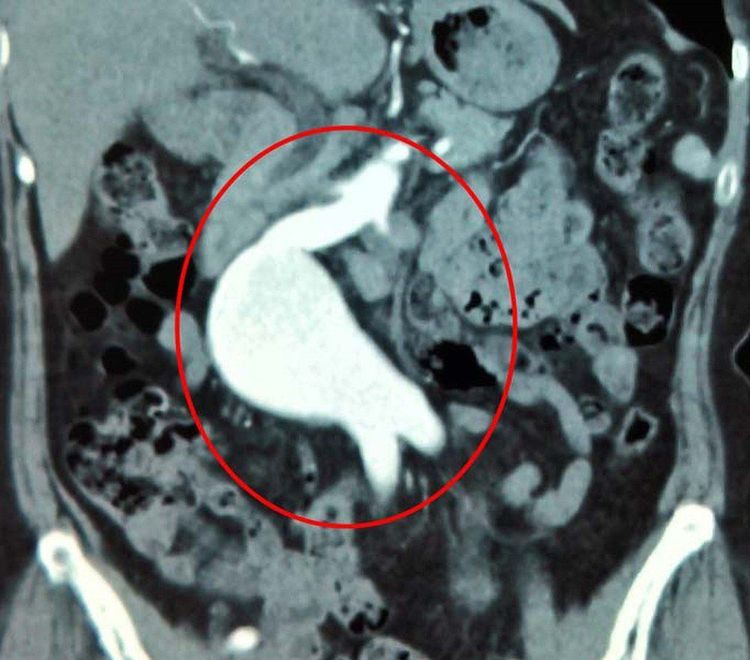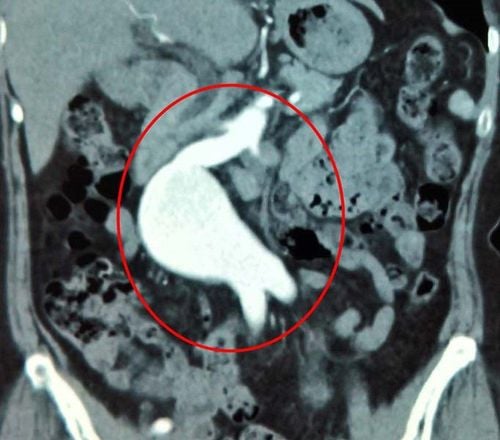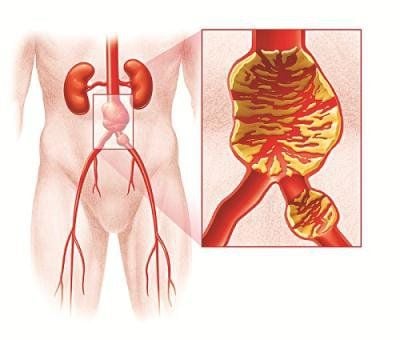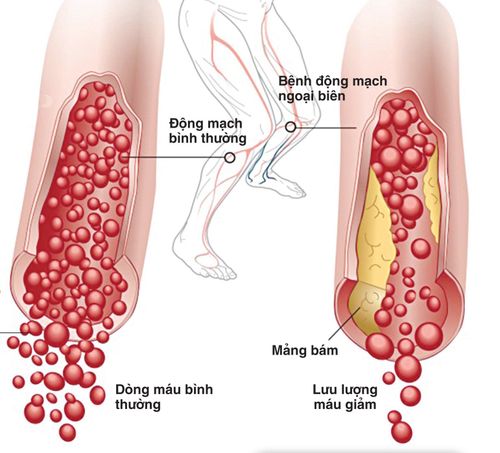This is an automatically translated article.
Question
Hello doctor, I would like to ask you for advice. The three children are 74 years old this year. Have longstanding diabetes and blood pressure. Yesterday, I had a physical examination and discovered that I had an abdominal aortic aneurysm. So let me ask, is the 36.2x85.4mm abdominal aortic aneurysm treatable?
Cao Hong Ngoan (1977)
Reply
Hello. With the question "Can abdominal aortic aneurysm 36.2x85.4mm be treated?" The doctor would like to advise as follows:
Aortic aneurysm is a phenomenon in which the aorta increases in size with a diameter of more than 50% and deforms into a pocket or rhombus shape, causing the vessel wall to stretch, which is easy to burst. The disease is often associated with patients with a history of smoking, hypertension, diabetes. In most cases of the disease, the patient only discovered the disease after being examined after a physical examination, or after symptoms of abdominal pain, back pain.
The most dangerous complication of an aortic aneurysm is rupture of the vessel at the site of the aneurysm. This complication can be fatal for the patient due to acute blood loss with chest pain, shortness of breath, pale skin, and low blood pressure. The cause found may be related to trauma, uncontrolled high blood pressure. Some of the most dangerous complications of aortic aneurysm include:
Acute peripheral artery occlusion: Due to the impact of flow or external force, the intravascular thrombus can dislodge, travel to the peripheral vessels, causing anemia in extremities and organs. This complication is rare, but if it does, it can have serious consequences. Threatened aortic aneurysm: Pain in the area where the bulging sac is located is a warning sign that the aorta is about to burst. This is a surgical or interventional emergency. Functional laboratory tests such as CT and ultrasound can help diagnose and treat disease. Aortic dissection: is a serious complication, complex treatment, confirmed by CT scan of the aorta. Inflammation around the bulge: Causes dull pain, can leak into surrounding organs (gastrointestinal tract, lungs).

The goal of treatment - both with follow-up and surgery - is to keep your aorta from bursting. Which form of treatment the doctor chooses depends on the size of the artery and the progression of the disease. Treatments include:
Medical treatment: Your doctor will recommend this treatment if the aneurysm is mild and there are no symptoms. If the aorta continues to bulge, your doctor will schedule more frequent appointments and treat other conditions directly related to the disease, such as high blood pressure, which can cause an aneurysm. bad owner. Patients will also be given periodic imaging tests and abdominal ultrasound every 6 months after being diagnosed, which will help doctors monitor the disease more comprehensively. Stent-graft intervention: Your doctor will recommend stent grafting if the aorta is 1.9 to 2.2 inches (4.8 to 5.6 cm) or larger. , or it swells at a very fast rate. The anatomy of the aneurysm is favorable for stent placement. Your doctor will recommend surgery if you have some symptoms such as severe pain in your abdomen, your aorta shows signs of hardening, leaking, or pain. Open surgery: For cases requiring surgical intervention when indicated. In case your father has abdominal aortic aneurysm on the background of hypertension and diabetes, it is necessary to be examined by a cardiologist and endocrinology for a doctor's advice.. You can take your father to the hospitals of Vinmec Health System for further advice.
Thank you for trusting Vinmec. Best regards!
Answered by Doctor General Internal Medicine Doctor - Department of Medical Examination & Internal Medicine - Vinmec Hai Phong International General Hospital.













